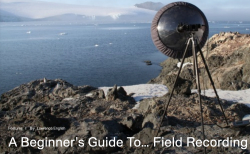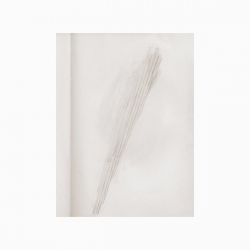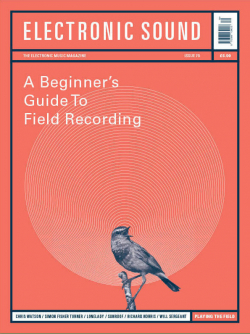Relational Listening: The Politics Of Perception

Type
Journal
Category
Article
[ Browse Items ]
Publication Year
2015
URL
[ private ]
Volume
2
Abstract
When considering the expanding modes of listening (see Schaeffer, 1966; Chion, 1994; Sonnenschein, 2001; Turri & Eerola, 2012; Truax, 2001), the taxonomies of listening and perception developed by theorists over the past half century, a variety of themes dominate. These themes echo an emergent understanding of the ear, an awakening of the subjectivity of listening brought about by the dawn of the Phonograph. With the invention of the Phonograph came a new ear, the prosthetic ear of the microphone, an ear that unlike our own failed to extract signal from empirical noise. It “heard everything” (Kahn, 1999, p. 9) and revealed to us how our organic ears acted as much (or perhaps more) as filters than listening receptacles (Schafer, 1994). This prosthetic ear also offered us innovative means through which sound might be captured for delivery outside of the time and place in which it occurred. In doing so “listening has in effect experienced an unprecedented transformation, which its technical equipment provokes and reveals” (Szendy, 2008, p. 10).
The discourses constructed in the wake of this discovery, and the subsequent technological developments, reflect a historicity of the (mis)understandings of listening up to that moment (Sterne, 2003). Moreover, these discourses signaled the need for a rapid reconsideration of a sense that had been backgrounded for a great many centuries. Whereas the visual world has been subject to widespread documentation, extrapolation and expressionism, the sound world had largely remained mute beyond the moment of utterance. It took the introduction of industrialization and specifically the popularization of recording, playback, and broadcast technologies for the conversation to develop with any vigor.
With growing access to affordable recording technologies over the past 30 years, first portable cassette recorders and more recently the hand held digital recorder (as well as an ever growing array of microphones for all applications), the question of how we listen has become increasingly present. We have begun to fully recognize that the execution of our auditory perception is anything but universal. Moreover, listening is a perceptive undertaking that operates simultaneously across a broad array of engagements with sonic dynamics in space over time. Listening “begins with the ordinary, by proximately working its way into what is yet unheard” (Idhe, 1976, p. 49), and also “comes to support and expose a capture in principle, of unity in difference and of the later in the former” (Nancy, 2002, p. 19). This attentiveness to perception is of particular significance for artists and curators embedded in the sonic arts. Here, perhaps more so than any other contemporary field, listening plays a pivotal role for not just understanding, but for creation. Listening, as the framework for extraction of signal(s) from the expansive flux of sound, is at the root of a great many contemporary practices that continue to progress and refine.
The discourses constructed in the wake of this discovery, and the subsequent technological developments, reflect a historicity of the (mis)understandings of listening up to that moment (Sterne, 2003). Moreover, these discourses signaled the need for a rapid reconsideration of a sense that had been backgrounded for a great many centuries. Whereas the visual world has been subject to widespread documentation, extrapolation and expressionism, the sound world had largely remained mute beyond the moment of utterance. It took the introduction of industrialization and specifically the popularization of recording, playback, and broadcast technologies for the conversation to develop with any vigor.
With growing access to affordable recording technologies over the past 30 years, first portable cassette recorders and more recently the hand held digital recorder (as well as an ever growing array of microphones for all applications), the question of how we listen has become increasingly present. We have begun to fully recognize that the execution of our auditory perception is anything but universal. Moreover, listening is a perceptive undertaking that operates simultaneously across a broad array of engagements with sonic dynamics in space over time. Listening “begins with the ordinary, by proximately working its way into what is yet unheard” (Idhe, 1976, p. 49), and also “comes to support and expose a capture in principle, of unity in difference and of the later in the former” (Nancy, 2002, p. 19). This attentiveness to perception is of particular significance for artists and curators embedded in the sonic arts. Here, perhaps more so than any other contemporary field, listening plays a pivotal role for not just understanding, but for creation. Listening, as the framework for extraction of signal(s) from the expansive flux of sound, is at the root of a great many contemporary practices that continue to progress and refine.
Description
http://earwaveevent.org/article/relational-listening-the-politics-of-perception/
Number of Copies
1
| Library | Accession No | Call No | Copy No | Edition | Location | Availability |
|---|---|---|---|---|---|---|
| Main | 399 | 1 | Yes |




